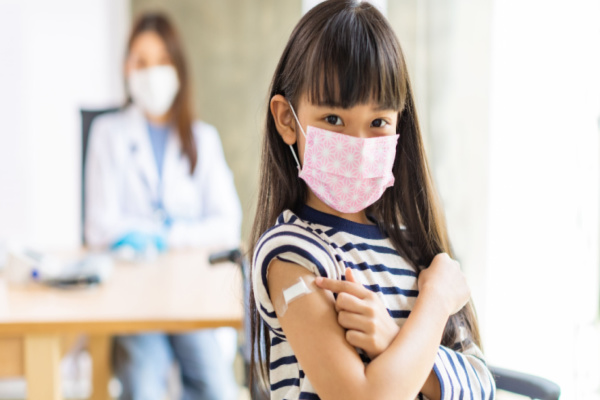The nation recorded one of its worst totals for child deaths from the flu this past season, coinciding with troubling drops in U.S. vaccination rates, federal health officials warned.
As USA Today reports, nearly 200 children died from influenza-related complications in the 2023-24 season, according to the Centers for Disease Control and Prevention (CDC). Officials announced the death count earlier this month after two children died in early September.
The season’s death toll of 199 matches the 2019-20 flu season, CDC said. The highest death toll recorded was 288 children who died from the flu in the 2009-10 season, at the height of the H1N1 swine flu pandemic.
Most of the 199 total children who died from the virus were eligible for a vaccine but did not receive one. Studies have shown that annual flu vaccines, while not foolproof against infection, are effective against serious illness. “It’s hard to watch,” Dr. Paul Offit, director of the Vaccine Education Center at Children’s Hospital of Philadelphia, said. “There was a way to prevent this.”
Officials must now contend with misinformation and hesitancy around vaccines that took hold with COVID-19, Offit said. The COVID-19 pandemic also disrupted families’ regular visits with their doctors, when they may have received routine vaccines. The CDC recommends everyone 6 months and older get their annual flu shot, especially if they are at higher risk, such as having asthma, neurologic conditions, or being obese.
The CDC data included 158 children who died who were eligible for a vaccine and whose vaccination status was known. Out of those, 131 children, or 83%, were not fully vaccinated. Among the 189 deaths with known information on medical conditions, 93, or 49%, had at least one preexisting medical condition. By age, 126 of the children were between 5 and 17 years old. There were 73 children younger than 5 years old. Children younger than 5, along with children with certain underlying conditions, face a greater risk of complications such as bronchitis or pneumonia from the flu.
The deaths coincide with drops in vaccinations among children. As of May 11, just over 53% of children between ages 6 months and 17 years old were vaccinated this season, which was lower than the prior season’s 56%, when there were 187 deaths. This past season is also lower than pre-pandemic coverage when 62.4% of children were vaccinated in 2020.
Vaccinations by children’s race, ethnicity, and whether they lived in rural areas appear to be worsening. Less than half of Black children received their annual flu vaccine, and slightly more than half of white children did, compared to nearly 60% of Hispanic children and nearly 59% of children listed as “Other,” CDC data showed. Less than 40% of children in rural areas received their annual dose, compared to nearly 60% of children in urban areas and nearly 54% in suburbs.
Annual flu vaccines target last year’s circulating strains of the virus. While it doesn’t completely eliminate the risk of getting infected, it reduces the chances of serious illness. A 2022 study found that vaccines were increasingly effective against the most life-threatening forms of disease. “A lot of this is preventable with vaccination against severe illness,” Dr. Adrienne Randolph, the study’s senior author and a critical care physician at Boston Children’s Hospital, said. “It’s really important that parents go get their kids vaccinated.”
“We are a healthier society when we make sure our children are vaccinated,” Dr. Michelle Taylor, director of the Shelby County Department of Health Services, which serves Memphis, told USA Today. “We know that when children are protected, and their health is protected, it means that the entire community is more protected.”
The results of more deaths and lower vaccination means more work needs to be done, said Michele Slafkosky, executive director of Families Fighting Flu, a nonprofit founded in 2004 by parents whose children died from flu complications. The organization has fought to include universal flu vaccine recommendations to reduce illnesses and deaths. This work also includes improving vaccine confidence and making families aware of options available for annual shots.
“We all need to do a better job of taking care of not just our loved ones, but our communities,” Slafkosky said.
—
Photo Credit: anon_tae / Shutterstock.com
